
The Historic Charm of Pungnammun Gate
Discover the timeless beauty and cultural richness of Pungnammun Gate in Jeonju, where history, tradition, and modern vibrancy blend seamlessly.
Pungnammun Gate, located in Jeonju, South Korea, is a landmark that offers tourists a unique glimpse into the rich history and cultural heritage of the region. As the southern gate of the old Jeonju Fortress, it stands as a symbol of resilience and grandeur, dating back to the Joseon Dynasty. The gate itself is a marvel of traditional Korean architecture, with its intricate wooden beams and graceful curves, making it a perfect spot for photography enthusiasts and history buffs alike. A visit to Pungnammun Gate is more than just a step back in time; it is an immersion into the local culture. Surrounding the gate, you will find a bustling neighborhood filled with quaint shops, traditional tea houses, and street vendors selling delicious local snacks. The area is also home to various festivals and cultural performances throughout the year, providing an authentic experience of Korean traditions and festivities. Just a short walk from the gate lies the Jeonju Hanok Village, where you can explore over 800 traditional Korean houses, known as 'hanoks'. This village offers a wide range of activities, from learning how to make traditional Korean crafts to trying on hanbok, the traditional Korean attire. Don't miss the chance to savor Jeonju's famous bibimbap, a mixed rice dish that is a feast for both the eyes and the palate.
Local tips in Pungnammun Gate
- Visit early in the morning or late in the afternoon to avoid crowds and capture the best photos.
- Wear comfortable shoes as the area is best explored on foot.
- Check the local festival calendar to experience traditional performances and events.
- Try local snacks from street vendors near the gate for an authentic culinary experience.
- Spend some time at Jeonju Hanok Village to fully appreciate traditional Korean culture.
The Historic Charm of Pungnammun Gate
Pungnammun Gate, located in Jeonju, South Korea, is a landmark that offers tourists a unique glimpse into the rich history and cultural heritage of the region. As the southern gate of the old Jeonju Fortress, it stands as a symbol of resilience and grandeur, dating back to the Joseon Dynasty. The gate itself is a marvel of traditional Korean architecture, with its intricate wooden beams and graceful curves, making it a perfect spot for photography enthusiasts and history buffs alike. A visit to Pungnammun Gate is more than just a step back in time; it is an immersion into the local culture. Surrounding the gate, you will find a bustling neighborhood filled with quaint shops, traditional tea houses, and street vendors selling delicious local snacks. The area is also home to various festivals and cultural performances throughout the year, providing an authentic experience of Korean traditions and festivities. Just a short walk from the gate lies the Jeonju Hanok Village, where you can explore over 800 traditional Korean houses, known as 'hanoks'. This village offers a wide range of activities, from learning how to make traditional Korean crafts to trying on hanbok, the traditional Korean attire. Don't miss the chance to savor Jeonju's famous bibimbap, a mixed rice dish that is a feast for both the eyes and the palate.
Iconic landmarks you can’t miss
Jeonju Hanok Village
Discover the beauty and culture of Jeonju Hanok Village, a stunning traditional village with historic architecture, delicious cuisine, and vibrant local culture.
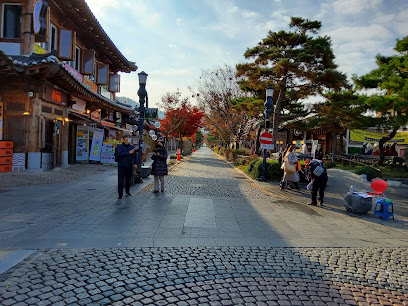
Nambu Market
Experience the vibrant culture and authentic flavors of Korea at Nambu Market in Jeonju, a must-visit destination for food lovers and culture seekers.

Jeonju Hyanggyo
Explore the historical charm of Jeonju Hyanggyo, a serene landmark in Jeonju-si, showcasing Korea's rich Confucian heritage amidst beautiful gardens.

Gyeonggijeon Shrine
Explore Gyeonggijeon Shrine, a historic gem in Jeonju that showcases Korea's rich heritage and stunning traditional architecture.

Jaman Mural Village
Discover the artistic heart of Jeonju-si at Jaman Mural Village, where vibrant murals and local culture come together in a colorful experience.

Pungnammun Gate
Discover the beauty and history of Pungnammun Gate in Jeonju, a remarkable landmark that reflects the grandeur of Korea's Joseon Dynasty.

Cheongyeollu
Discover the serenity and cultural richness of Cheongyeollu, a must-visit tourist attraction in Jeonju, renowned for its stunning views and historical significance.

Jeonju Pungpaejigwan
Discover the rich history and cultural charm of Jeonju Pungpaejigwan, a must-visit landmark in South Korea that brings the past to life.

Hanbyeokdang Pavilion
Explore the historic Hanbyeokdang Pavilion in Jeonju, a serene haven showcasing traditional Korean architecture and rich cultural heritage.

Pungnammun Square
Explore the serene Pungnammun Square in Jeonju, a perfect blend of historical beauty and tranquil nature, ideal for relaxation and cultural experiences.

Unmissable attractions to see
Jeonju Zoo
Experience the beauty of wildlife at Jeonju Zoo, a family-friendly attraction showcasing diverse animal species in a scenic environment.

Pungnammun Gate
Explore the Historic Pungnammun Gate in Jeonju, a stunning symbol of Korea's rich heritage and architectural beauty, perfect for history lovers and photographers.

Hanbyeokdang Pavilion
Explore Hanbyeokdang Pavilion, a historical gem in Jeonju, where tradition meets tranquility amidst stunning natural beauty.

Pungnammun Square
Explore Pungnammun Square, a serene park in Jeonju, blending historical charm with natural beauty, perfect for relaxation and cultural experiences.
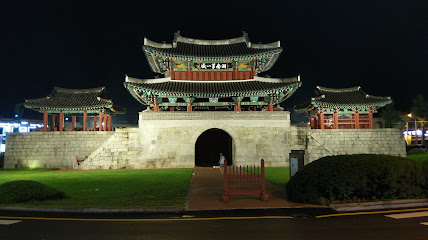
Jeonju Hanok Village History Museum
Explore the rich cultural heritage of Korea at the Jeonju Hanok Village History Museum, a must-see destination for history lovers and travelers.
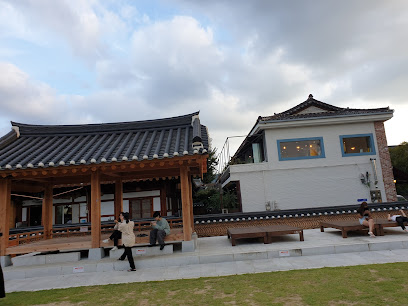
Essential places to dine
Veteran Kalguksu
Savor the flavors of traditional Korean knife-cut noodles at Veteran Kalguksu in Jeonju – where every bowl tells a story.

조점례남문피순대
Savor authentic Korean breakfast delights at 조점례남문피순대 in Jeonju - where tradition meets taste.

Hangugjib
Discover the vibrant tastes of Korea at Hangugjib in Jeonju - a culinary experience steeped in tradition.

45-year-old traditional bibimbap Jongno Hall
Discover authentic Korean bibimbap at Jongno Hall in Jeonju – a historic eatery celebrating over 45 years of culinary excellence.

Pungnamjeong
Indulge in authentic Korean cuisine at Pungnamjeong in Jeonju - a must-visit culinary experience for every traveler.

Yangsigdang
Experience authentic Italian cuisine at Yangsigdang in Jeonju - where each dish is crafted with passion and tradition.

Hawaiian recipe
Discover authentic Hawaiian flavors in Jeonju at the renowned Hawaiian Recipe Restaurant – where tradition meets culinary excellence.

9413 Restaurant & Pub
Discover authentic Korean cuisine at 9413 Restaurant & Pub in Jeonju – where tradition meets modern dining in a cozy atmosphere.
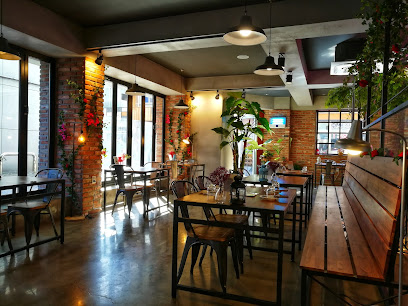
순자씨밥줘
Savor the authentic taste of Korean barley rice at 순자씨밥줘 in Jeonju - where tradition meets flavor.
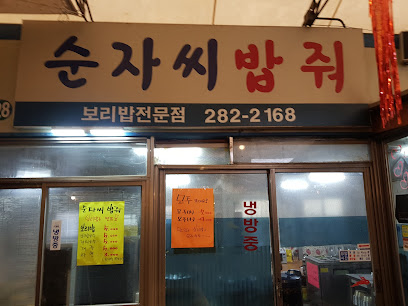
좋은날레스토랑
Savor delightful Western dishes at 좋은날레스토랑 in Jeonju – where tradition meets modern dining experiences.

Markets, malls and hidden boutiques
Jeonju Hanok Village
Experience the rich tapestry of Korean culture at Jeonju Hanok Village, where history, cuisine, and artistry converge in a picturesque setting.

Nambu Market
Discover the vibrant flavors and cultural richness of Nambu Market, a must-visit traditional market in Jeonju known for its delicious street food and unique local products.

LOTTE Department Store Jeonju
Explore LOTTE Department Store Jeonju for a unique shopping experience filled with local flavors, fashion, and entertainment.
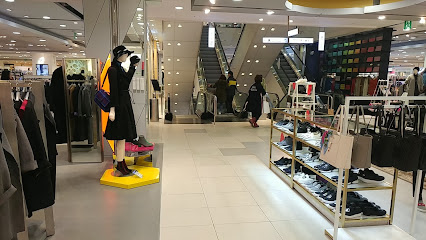
Pungnammun Gate
Discover the historical charm of Pungnammun Gate, a stunning landmark that showcases Jeonju's rich cultural heritage and architectural beauty.

Youth Market
Experience the vibrant Youth Market in Jeonju, where culture meets commerce and delicious street food awaits every corner.

Jeonju Pungpaejigwan
Explore the rich cultural heritage at Jeonju Pungpaejigwan, a historical landmark that showcases Korea's exquisite architecture and vibrant traditions.

Kakao Friends
Discover the whimsical world of Kakao Friends in Jeonju, where charming stationery meets vibrant culture in a must-visit shopping experience.

Jeonju hanok village hanbok rental HANBOKNAM
Explore the cultural heart of Korea at Jeonju Hanok Village with stunning hanbok rentals, perfect for memorable photos and immersive experiences.

라라빈관
Explore the eclectic fashion offerings of 라라빈관 in Jeonju, where tradition meets modern style in a charming boutique setting.

Jeonju Crafts Exhibition Hall
Explore Jeonju Crafts Exhibition Hall, a vibrant showcase of Korean artistry and craftsmanship, offering unique workshops and cultural insights.

Essential bars & hidden hideouts
Nomadic Brewing Company
Experience the vibrant craft beer culture at Nomadic Brewing Company, featuring unique seasonal brews in a welcoming atmosphere.

Bar Cold Dawn
Experience the vibrant nightlife at Bar Cold Dawn, Jeonju's premier cocktail bar offering unique drinks and a charming atmosphere for all.
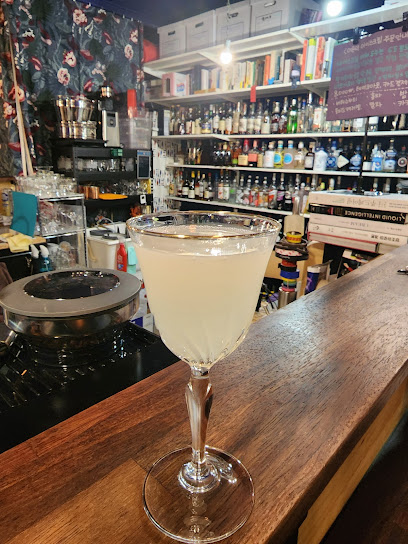
Jinju Doga
Discover the lively nightlife at Jinju Doga, a vibrant bar in Jeonju-si offering an extensive drink menu and a warm atmosphere for all visitors.

Deepin
Discover the lively ambiance of Deepin Pub, a top destination in Jeonju for craft beers, cocktails, and unforgettable nightlife experiences.

무드 카페 & 펍 Mood Cafe & Pub
Discover the vibrant atmosphere and creative cocktails at Mood Cafe & Pub in Jeonju, a must-visit for every traveler.

Pub Ink
Discover the heart of Jeonju's nightlife at Pub Ink, where local charm meets vibrant social experiences in a cozy bar setting.

Mystery Mansion
Discover the enchanting atmosphere and eclectic drinks at Mystery Mansion, a hidden bar gem in the heart of Jeonju, South Korea.

Pul
Discover the lively atmosphere of Pul Bar in Jeonju, where local culture meets vibrant nightlife in a cozy setting.

작은루페
Discover the cozy bar experience at 작은루페 in Jeonju, where local drinks and warm hospitality meet in a charming ambiance.

황제가맥
Experience the fusion of tradition and modernity at Jeonju's 황제가맥 bar, where innovative drinks meet Korean culture.

Local Phrases
-
- Hello안녕하세요
[Annyeonghaseyo] - Goodbye안녕히 가세요
[Annyeonghi gaseyo] - Yes네
[Ne] - No아니요
[Aniyo] - Please/You're welcome부탁합니다/천만에요
[Butakhamnida/Cheonmaneyo] - Thank you감사합니다
[Gamsahamnida] - Excuse me/Sorry죄송합니다
[Joesonghamnida] - How are you?어떻게 지내세요?
[Eotteoke jinaeseyo?] - Fine. And you?잘 지내고요. 여러분은요?
[Jal jinaegoyo. Yeoreobun-eunyo?] - Do you speak English?영어 할 수 있나요?
[Yeongeo hal su innayo?] - I don't understand이해하지 못해요
[Ihaehaji mothaeyo]
- Hello안녕하세요
-
- I'd like to see the menu, please메뉴를 보여주세요
[Menyureul boyeojuseyo] - I don't eat meat고기를 먹지 않아요
[Gogireul meokji anayo] - Cheers!건배!
[Geonbae!] - I would like to pay, please결제하고 싶어요
[Gyeoljehago sipeoyo]
- I'd like to see the menu, please메뉴를 보여주세요
-
- Help!도와주세요!
[Dowajuseyo!] - Go away!가세요!
[Gaseyo!] - Call the Police!경찰을 불러주세요!
[Gyeongchareul bulleojuseyo!] - Call a doctor!의사를 불러주세요!
[Uisareul bulleojuseyo!] - I'm lost길을 잃었어요
[Gireul ileosseoyo] - I'm ill아파요
[Apayo]
- Help!도와주세요!
-
- I'd like to buy...사고 싶어요...
[Sago sipeoyo...] - I'm just looking둘러보고 있어요
[Dulleobogo isseoyo] - How much is it?얼마에요?
[Eolmaeyo?] - That's too expensive너무 비싸요
[Neomu bissayo] - Can you lower the price?가격을 깎아줄 수 있어요?
[Gagyeogeul kkajul su isseoyo?]
- I'd like to buy...사고 싶어요...
-
- What time is it?지금 몇 시에요?
[Jigeum myeot si-eyo?] - It's one o'clock한 시에요
[Han si-eyo] - Half past (10)10시 반
[Sibsi ban] - Morning아침
[Achim] - Afternoon오후
[Ohu] - Evening저녁
[Jeonyeok] - Yesterday어제
[Eoje] - Today오늘
[Oneul] - Tomorrow내일
[Naeil] - 1일
[Il] - 2이
[I] - 3삼
[Sam] - 4사
[Sa] - 5오
[O] - 6육
[Yuk] - 7칠
[Chil] - 8팔
[Pal] - 9구
[Gu] - 10십
[Sib]
- What time is it?지금 몇 시에요?
-
- Where's a/the...?...이 어디에 있어요?
[...i eodie isseoyo?] - What's the address?주소가 뭐에요?
[Jusoga mwoeyo?] - Can you show me (on the map)?맵으로 보여주실 수 있어요?
[Maeb-euro boyeojusil su isseoyo?] - When's the next (bus)?다음 (버스)는 언제에요?
[Daeum (beoseu)neun eonjeyo?] - A ticket (to ....)표 하나 주세요
[Pyo hana juseyo]
- Where's a/the...?...이 어디에 있어요?
History of Pungnammun Gate
-
Pungnammun Gate, built in 1408 during the early Joseon Dynasty, served as a crucial defensive structure and one of the four main gates of Jeonju's city walls. It symbolizes the city's historical significance as a political and cultural center, particularly during the Joseon period when Jeonju was the birthplace of the dynasty's founder.
-
In the late 19th and early 20th centuries, Pungnammun Gate underwent various restoration efforts as the Korean Empire sought to preserve its cultural heritage against foreign intervention. The gate became a symbol of resilience, representing the spirit of the local population amid the tumultuous changes brought by colonial rule.
-
During the Japanese colonial period (1910-1945), Pungnammun Gate faced neglect and damage as urban development progressed without regard for historical structures. However, the gate remained an important landmark for the local community, serving as a reminder of Jeonju's rich history and cultural identity.
-
In the late 20th century, Pungnammun Gate was restored, reflecting the growing interest in preserving Korea's cultural heritage. The gate, along with other historical sites in Jeonju, was recognized as part of the UNESCO Creative City of Gastronomy designation in 2012, highlighting the city's commitment to cultural preservation and its significance in Korean history.
-
Today, Pungnammun Gate stands not only as a historical monument but also as a vibrant cultural hub. The surrounding area frequently hosts festivals, art exhibitions, and traditional performances, making it a focal point for both locals and tourists seeking to experience the rich cultural tapestry of Jeonju.
Pungnammun Gate Essentials
-
Pungnammun Gate is located in the heart of Jeonju, easily accessible from various neighborhoods. If you are traveling from Jeonju Hanok Village, it is a short 15-minute walk. For those coming from Jeonju Station, you can take bus number 5, 15, or 27, which will take approximately 20 minutes. Taxis are also a convenient option, with a travel time of around 10 minutes depending on traffic.
-
Pungnammun Gate is pedestrian-friendly, making it easy to explore on foot. Local buses operate throughout Jeonju, covering nearby attractions. Bicycles can be rented from various locations within the city for those who prefer to cycle. Taxis are readily available and can be hailed on the street or booked via apps. The Jeonju City Tour bus is also a fantastic option for tourists wanting to see multiple sites in a single trip.
-
Pungnammun Gate is generally safe for tourists. However, it is wise to remain vigilant, especially in crowded areas. Avoid poorly lit streets at night and do not flash valuables. While no specific high-crime areas targeting tourists have been reported, standard precautions should always be taken to ensure your safety.
-
In case of an emergency, dial 112 for police assistance or 119 for fire and medical emergencies. There are several hospitals and clinics in Jeonju, with the nearest being Jeonbuk National University Hospital. It is advisable to have travel insurance that covers medical emergencies. Pharmacies are available throughout the area for minor health issues.
-
Fashion: Do dress respectfully, especially when visiting any nearby temples or traditional sites. Avoid overly casual or revealing clothing. Religion: Do show respect for local religious customs, such as bowing slightly when entering places of worship. Public Transport: Do be courteous on public transport and give up your seat for the elderly. Don’t eat or drink on buses. Greetings: Do greet locals with a polite nod or small bow. Eating & Drinking: Do try local specialties, but don’t waste food or leave leftovers on your plate, as it is considered impolite.
-
To experience Pungnammun Gate like a local, visit the nearby traditional markets, where you can find local delicacies and handmade crafts. Engage with local vendors to learn about their products. Early morning is a great time to visit the gate for fewer crowds and beautiful light for photography. Don’t miss trying Jeonju bibimbap, a famous local dish, at one of the nearby restaurants.
Nearby Cities to Pungnammun Gate
-
Things To Do in Daejeon
-
Things To Do in Gwangju
-
Things To Do in Suncheon
-
Things To Do in Daegu
-
Things To Do in Mokpo
-
Things To Do in Suwon
-
Things To Do in Andong
-
Things To Do in Busan
-
Things To Do in Incheon
-
Things To Do in Gyeongju
-
Things To Do in Ulsan
-
Things To Do in Seoul
-
Things To Do in Pohang
-
Things To Do in Chuncheon
-
Things To Do in Jeju City







